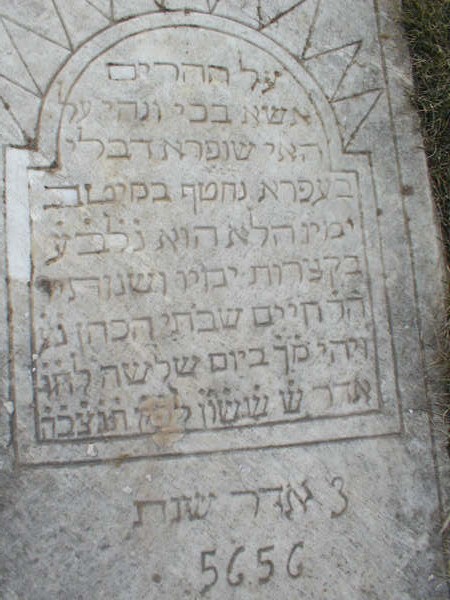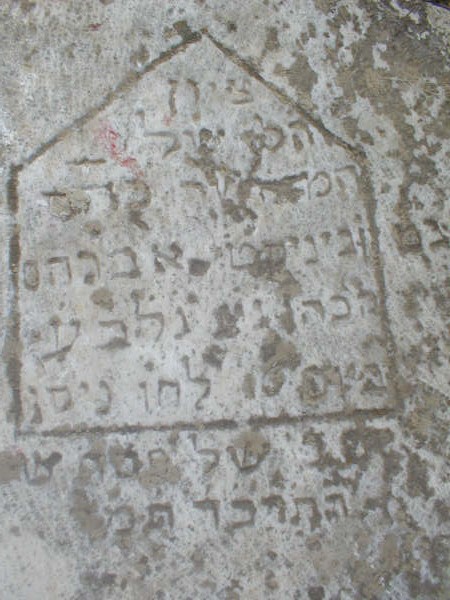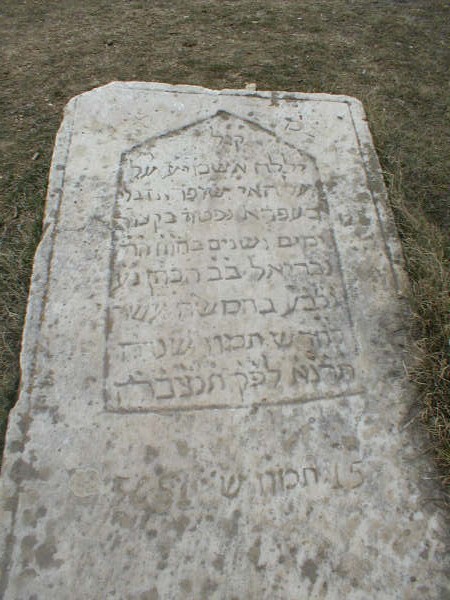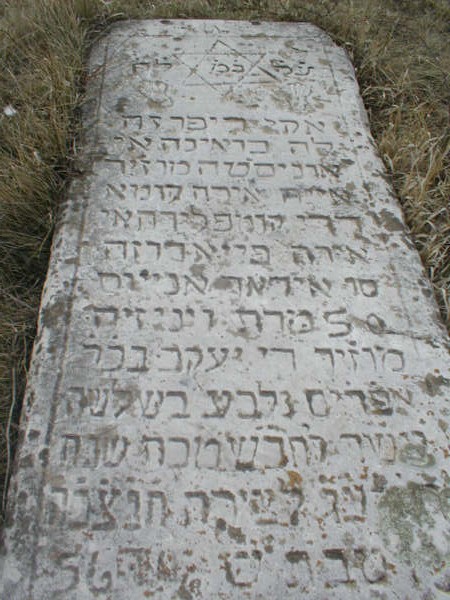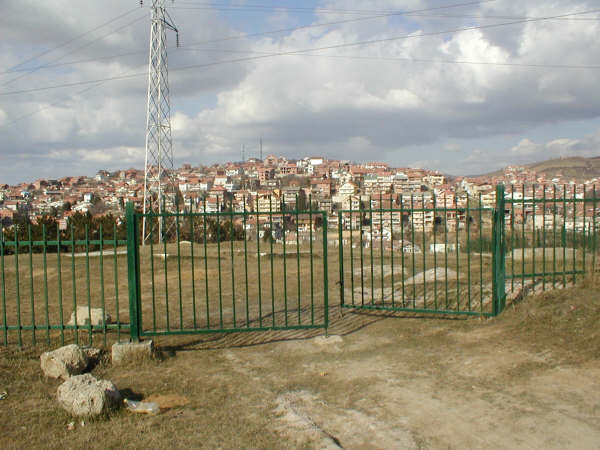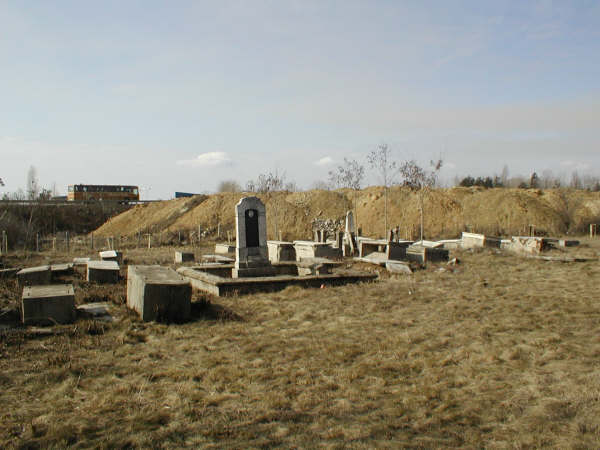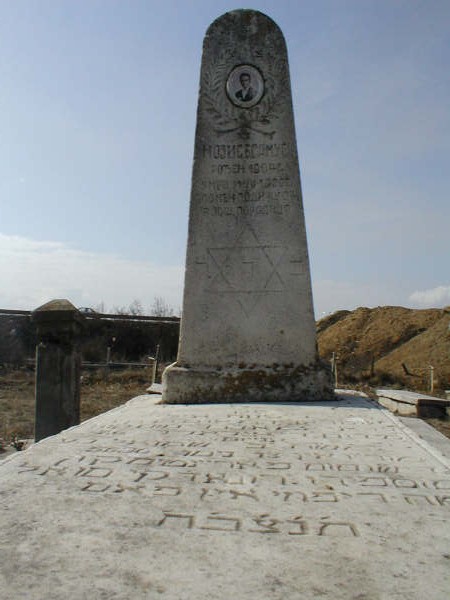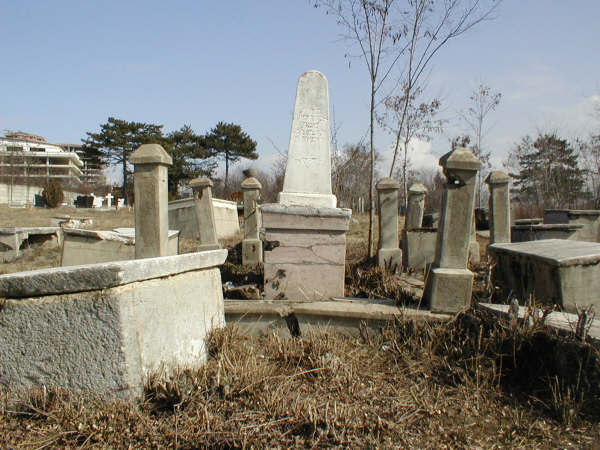Jewish Community history and more history. Photo from cemetery. The Jewish Cemetery on top of Tauk Bahqe hill near Velania dates from the 19th century when Pristina's Jewish Community had about 1,500 members. The cemetery was landmarked in 1967 when 57 tombstones were visible. Today, the desolate cemetery is surrounded by a metal fence; isolated tombstones are scattered between thorny bushes and high grass. [March 2009]
The cemetery is located in the Lagjja e Dodones Velania area in Kosova Province. Present total town population is over 100,000 – over 500,000 with no Jews.
- Responsible for site: Mr. Baki Svirca Director Kosova Institute for Monuments Protection Zenel Salhiu Street no 9, Prishtina, Kosova +38 381 549 665 Mob +337 44 405 397 email This email address is being protected from spambots. You need JavaScript enabled to view it. Kosova is currently under the protection of UNMIK. Interested in site even if not responsible for site: Museum of Kosova Prishtina +381 38 249 964 email This email address is being protected from spambots. You need JavaScript enabled to view it.
- May have information about the cemetery: Mr. Cedda Prlincevic (see additional information below) I was told there had been a Jewish presence in Kosova for over 500 years. In 1944, Albanian fascists, acting on Gestapo orders, interned and plundered the belongings of 1,500 of Prishtina's Jews, most of whom, were sent to Bergen-Belsen concentration camp. Less than half of Kosova's pre-Second World War Jewish population survived the Holocaust. Most of those that did immigrated to Israel from 1948 to 1952. More recently, Prishtina's few remaining Jews left the city in late June 1999, and most are now living in Belgrade and Vranje. The last Jewish Prishtina family (Prlincevic) fled Prishtina when the Albanian population returned and KFOR entered the city. The head of this family was a Mr. Cedda Prlincevic, a historian by training, he was in charge of the city archives (his father was Serbian, and his wife, a Serb). It is unlikely he was chased out because he was Jewish, more likely it was because he was viewed as being Serbian (all Serbs, irrespective of religion, were chased from Kosova when the Albanian refugees returned). I believe Mr. Princevic is now living in Tel-Aviv. Undoubtedly he would have precise information on the cemetery. This is the email address of a journalist who interviewed Mr. Princevic in Tel-Aviv and who may know how to contact him. This email address is being protected from spambots. You need JavaScript enabled to view it.. Jewish population was 1,500 in 1944. Date of last known Jewish burial in the Orthodox (Sephardic) cemetery was 1980’s. Approximate distance of cemetery from congregations that used it is about 2 km. The isolated, suburban cemetery location on a hillside is part of a municipal cemetery. No sign, but Jewish symbols, mark the on gate or wall. The cemetery is reached by turning directly off a public road. Access is open to all via a substantial fence but without a gate erected in 1999. The current size is several acres. 20 to 100 gravestones are in original locations, regardless of condition with 25% - 50% of surviving stones toppled or broken. Vegetation overgrowth in the cemetery is a constant problem, disturbing graves and stones. The marble tombstones and memorial markers are finely smoothed and inscribed stones, flat stones with carved relief decoration, and horizontally set stones with Sephardic inscriptions. Inscriptions on tombstones are in Hebrew. No known mass graves. Current owner is unknown, but the property is used only as a Jewish cemetery. Properties adjacent to the rarely visited cemetery are residential. The cemetery is situated on a high hill overlooking the city to the north of Prishtina in an area that has become heavily developed since the cease-fire in June 1999. The graves are in need of restoration (some appear to have been vandalised). Although a new palisade fence has been erected around the perimeter of the cemetery, I fear, from evidence I found there, that children play there and older people use the cemetery for 'nocturnal recreation purposes'.
- Care: occasional vegetation cleared by local/municipal authorities and regional authorities after 1999 NATO bombing and paid by the government. Security (uncontrolled access) and vandalism is a very serious threat. Vegetation is a serious threat. Children use the cemetery as a play area. Site is appealed as a location for re-development.
Since the March-June 1999 NATO bombing of Serbia, I've been engaged in various projects in Kosova. As far back as November 1999 I knew that there was a Jewish cemetery in Prishtina but I was put off going there, as there was a concern about landmines. Last September I was able to walk around a cleared area in the cemetery. I also photographed all the graves that were accessible. Some parts are still overgrown but as nobody was able to confirm landmine clearance, I was unable to explore further (local children told me there were more graves in this overgrown area). I am in Prishtina frequently, I am willing to take more photographs when the vegetation is cleared. My photographs of the visible graves were submitted to the JOWBR.
Mrs. Cheryl JOHNSON visited the site September 2005 and completed the survey in March 2006. Her address is PO Box 50056, Musgrave Road 4062, Durban, KwaZulu-Natal, South Africa. This email address is being protected from spambots. You need JavaScript enabled to view it.. Other documentation exists but was inaccessible. She was accompanied by Mr Armond MORINA, Suite 21, 50 Eduard Lir Street, Prishtina, KOSOVA (UNMIK) Email This email address is being protected from spambots. You need JavaScript enabled to view it. [March 2006]

